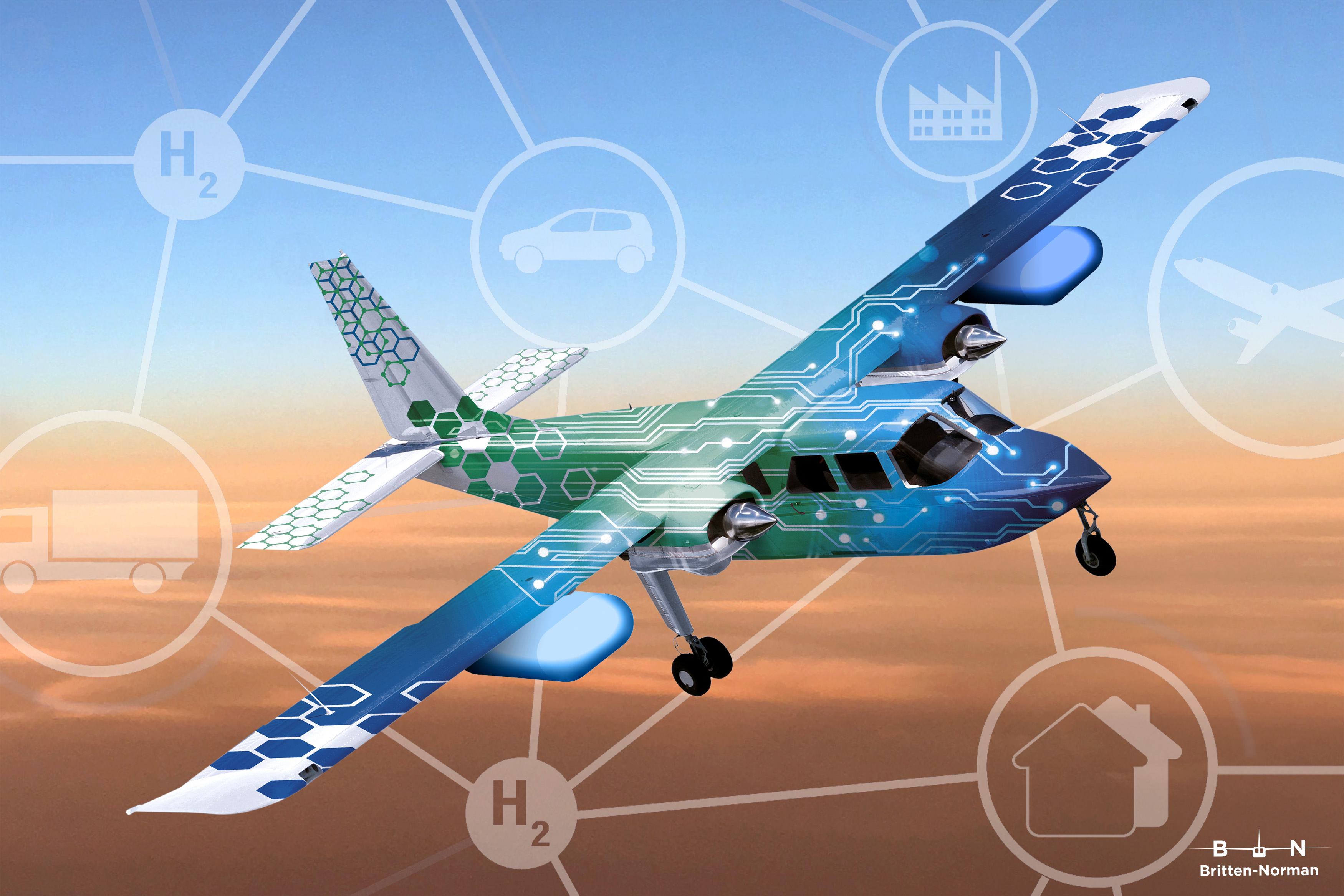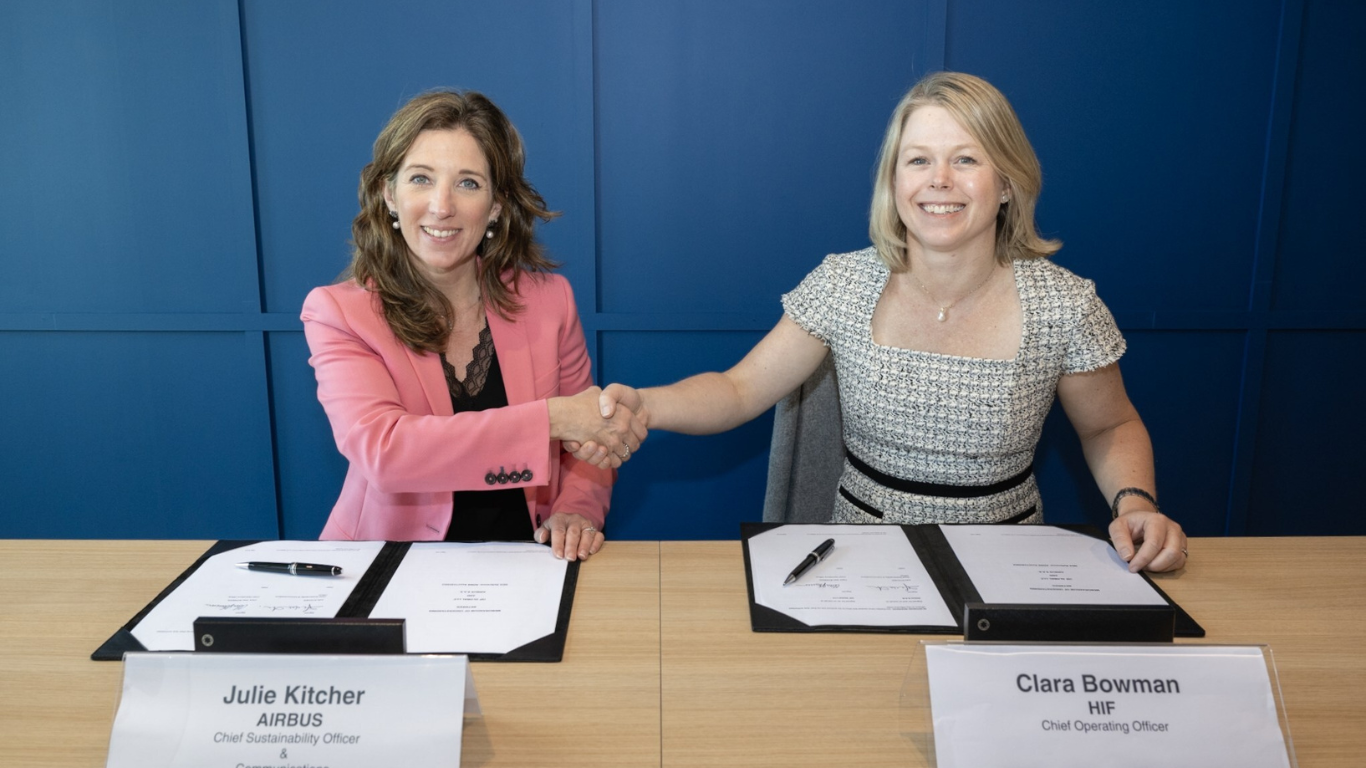Another critical step has been taken towards making zero-carbon flights to the Isles of Scilly commercially available. This week, ahead of the United Nations COP26 Climate Change Conference in Glasgow, three companies jointly signed a Letter of Intent (LOI), cementing their relationship and commitment to bringing hydrogen-powered flights to the islands, making the zero-carbon vision a reality.
The Isles of Scilly Steamship Group (ISSG), Cranfield Aerospace Solutions (CAeS) and its partner Britten-Norman have vowed to work together to make the vision a reality. Utilising Britten-Norman’s expertise as the original equipment manufacturer for one of the world’s most successful low-cost, STOL, short-sector aircraft, CAeS is leading the collaboration under Project Fresson with a view to integrating hydrogen fuel cell technology into the Islander. ISSG, which has operated the Islander for many years, has sold one of its aircraft to CAeS to be retrofitted.
ISSG will further support Project Fresson by providing expertise gained from its own operations and its understanding of infrastructure requirements. The Isles of Scilly, which lie just off the coast of Cornwall in the UK’s south west, attract more than 100,000 visitors a year by their unspoilt beauty and natural wonder.
The uniqueness of the islands has been recognised by the entire archipelago being defined a protected landscape. The islands have been designated a Conservation Area, Area of Outstanding Natural Beauty, a Heritage Coast and a Special Protection Area. Operation of the hydrogen-electric powered Islander will allow ISSG to help protect the unique, beautiful, protected landscapes found in the Scilly Isles.
The original concept for a zero-carbon aircraft led CAeS and Britten-Norman to consider battery power. It soon became apparent that the impact of weight, charge time and charging infrastructure made a battery-only solution impractical. Moving to a hydrogen-electric fuel cell option provides operators with greater flexibility, higher passenger load and improvements to the bottom line through a potential 50% reduction in powertrain maintenance cost and a 40-50% reduction in variable costs. Green hydrogen can be produced locally using renewable energy. It can also be stored at an operating base with relative ease and without the need to provide complex charging networks.
Turn-around times between sectors are similar to those achieved with fossil fuels, providing greater resilience to operations.
Stuart Reid, Chief Executive of the Isles of Scilly Steamship Group which operates the airline Skybus, announced: “This is an exciting development in the project, and one which we are proud to be a part of. The Letter of Intent for hydrogen aircraft really shows our commitment towards a zero-emission aviation industry and to becoming an early adopter of this cutting-edge technology.
“The Isles of Scilly is a special and extraordinary place and we take our environmental policy very seriously, as well as our responsibility towards meeting the Government’s objectives of the decarbonisation of transport.”
Paul Hutton, CAeS CEO said, “It is incredibly important for the future of our planet that we deliver emission-free aircraft and I am delighted to see the Isles of Scilly Steamship Group’s commitment to this outcome.
I would encourage contact from airlines of all sizes who would like to find out how these aircraft can be part of their future.”
William Hynett, Chief Executive of Britten-Norman, commented: “Innovation sits at the heart of the Britten-Norman strategy so we are very pleased to be part of Project Fresson and its aim to deliver zero carbon travel.
We wish to help bring hydrogen-electric commercial aircraft to the market at the earliest opportunity so that we can help drive our customers’ success in the new age of air transport.” “In striving for a zero-carbon future, it is essential that solutions are practical, affordable and sustainable and we believe that we are well placed to help achieve these vital goals in a way that will resonate with our global customers, many of whom seek to help protect the outstandingly beautiful places in which they operate.”





















































